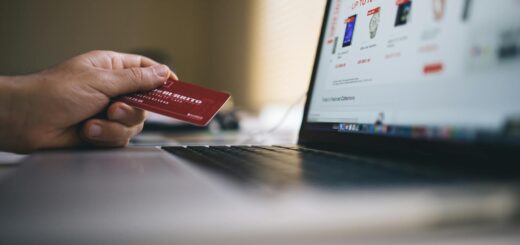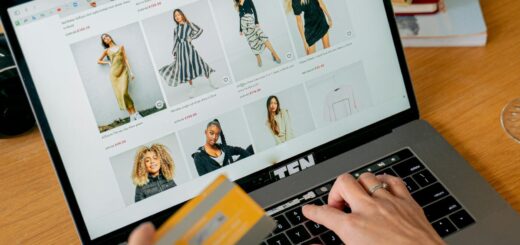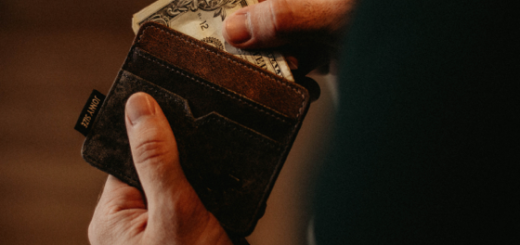My Top 11 Headline Types That You Can Use To Begin A ‘Killer’ Sales Letter
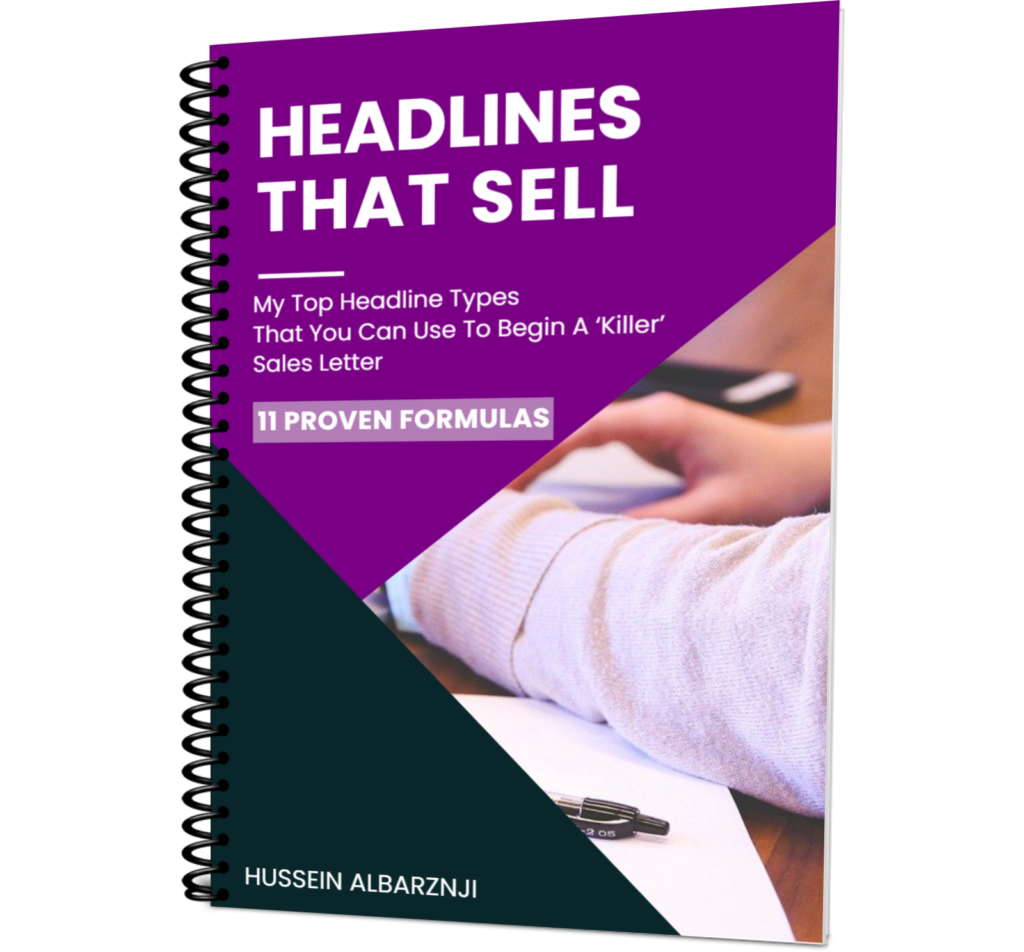
The type of product you are selling will determine which sort of headline to use. A technological breakthrough will not lend itself to a headline that is emotional or uses a trick technique, as these will detract from the credibility of your product. Instead you could use one that stresses the featured benefit or news value of it.
To give you an idea of how headline types are more appropriate for certain products, here are several headlines advertising a new battery that lasts 50% longer than normal batteries, along with other examples.
One – News Headlines
Announcing
“New Battery Lasts 50% Longer Than Other
Leading Brand Batteries”
This headline is similar to one that you would see in newspapers. You could use this for products that are new, or are improved versions of existing goods. In addition, they can be used to announce breakthroughs, or important facts that the general public might not know about but which will concern them.
You will have to be really careful if you decide to use this type of headline to announce your product. There is nothing worse than a news headline that leaves the reader thinking, “So what, who cares?”
The following guidelines will help you decide where the news is:
- WHO developed it? Who discovered it? Who will get the greatest benefit from this product?
- WHAT value in particular is newsworthy? What aspect should you focus on, the product, the people who will benefit from it, or the company who developed it?
- WHEN was the product developed? When will it be available?
- WHERE did this new product or service come from? Is there anything unique about its origin or place of use?
- WHY is the new development newsworthy?
- HOW is this product or service used?
This will help you come up with a newsworthy hook that will make your headline sizzle. Be as specific as possible and make sure the benefit of your headline is aimed at your readers. Don’t merely be factual as this can make for a very dull headline and one which will be ignored.
An example of a factual headline would be something like this:
“UltraMow Launch their New Lawnmower”
Thrilling eh? Bet you’re dying to go out and buy it! Your response was probably, “Who cares?” However, if we get more specific, then the headline gets more exciting and benefit driven.
“Wimbledon Praise the New Flow-Mow Lawnmower.”
That’s more compelling, most people reading it (who were thinking of buying a new lawnmower), would think that if Wimbledon Tennis Club were using the lawnmower, then it must be good. This may still not be the best headline though; the deciding factor would be the news hook that has the most powerful effect on your prospects.
“UltraMow’s New ‘Double-Cut’ Action Will Halve the Number of Times You Have to Mow Your Lawn”
Depending on your audience, they will be either motivated by the first or second headline. If your prospects are avid horticulturists, they will probably be more impressed by the first. However, for most households the second headline will hold more appeal.
As with all headlines, make sure you can back up what your headline states. Don’t try and capture attention by making claims that are unsupported in your body copy. If you can’t support your claims then your mailshot will lack authority and your sales will suffer. One of the biggest turn-offs for customers is inflated claims and this is why many don’t believe sales letters.
Typical words used in the ‘news‘ headline are:
- Announcing
- Just released
- At last
- Now Available
- New
- Introducing
- Finally
- Now
Examples:
“At Last, Secrets of the Super Rich Available to Everybody”
“Announcing a Major Breakthrough in Hair Loss Prevention”
“New Cabbage Soup Diet Can Help You Lose 5 Pounds a Week”
“Finally – a Transparent Sun Cream.”
Two – Guarantee Headlines
If your product comes with a really powerful, ironclad guarantee than this can make a superb headline. There are few things more compelling for a prospect than being told a fantastic benefit that is guaranteed. Your product must live up to your claims though, as must the guarantee, or be prepared for a deluge of angry complaints and refunds.
Here are some examples:
“New Battery Guaranteed to Last 50% Longer”
“Lose 10lbs in 14 Days or Your Money Back”
“New. Learn to Speak French in only 30 Days, 100% Guaranteed”
Three – How To Headlines
There are over 7,000 books in print with a title beginning with ‘How To’, so you can’t go far wrong with this headline. It is really effective as a headline or book title and is perhaps the safest headline to use. It almost cannot be overdone. This headline is best used for offering your prospect advice or solutions to their problems.
Here are some examples:
“How to Get 50% More Battery Power for Your Money”
“How To Win Friends and Influence People”
“How To Make £1300 a Day Even When Times are Tough”
“How To Get Out of Debt”
“How To Get Curls Which Last”
“How a ‘Darn Fool’ Idea Put Me on The Road to Riches”
Four – Featured Benefit Headlines
There are two ways to write this headline. For the first way to be really effective, you have to know what makes your niche market tick. This allows you to create a headline that gives your prospects what they want. Of course, all headlines must be benefit driven, but this headline is created from knowing the exact benefit your market wants, rather than from looking at your product.
The second way is to use your product’s USP as a headline. Your statement should be straightforward – when your product is better than anyone else’s all you need to do is to tell the world. There is no need to be clever because you are selling a strong benefit.
Here are some examples:
“Save up to 50% on Battery Costs”
“Because Women Cause Only 3% of Accidents, We Insure You for Less”
“Girls… Want Curls?”
“Why We Can Offer You Home Insurance for Half What
You’re Paying Now”
Five – Reason Why Headlines
This is where you give your prospect specific reasons why they should buy your product, or read your sales letter (and then want to buy). You don’t need to include the words ‘reasons why’ in the headline. They are effective because they are specific. The specific facts or numbers they contain make them more believable than if they were composed of generalities. E.g. “7 Secrets of…”; “5 Keys to…”; “7 Habits of…”
Here are some examples for you:
“3 Tests That Prove Why ABC Batteries Last Twice As Long”
“7 Habits of Highly Effective People”
“67 Businesses You Can Start Today That Can Make
You a Millionaire”
“5 Minute Exercises that Sheds Inches Fast”
“The 7-Step Slimming Plan”
Six – The Testimonial Headline
When people like your product they sometimes send you unsolicited testimonials. You can also ask satisfied customers for them. Using a testimonial as a headline is very powerful, because what your customers think of your product is far more convincing to your prospects than anything you could ever say about it.
Perhaps the most famous testimonial advert is “They Laughed When I Sat Down at the Piano…” John Caples wrote the advert to promote music lessons by mail. In it he describes a party scene in which the advert’s narrator, who is known as a jokester, sits down at the piano after an accomplished musician finishes playing for their friends. Caples goes on to describe how everyone at the party assumes he’s putting them on, and they all get ready for a laugh. They are then amazed when he starts playing classical music beautifully.
The narrator’s friends want to know how he learned to play so well in such a short time. He of course tells them about the lessons he took by mail. As the advert ends, readers are invited to send in the coupon, ostensibly to learn how they can have a similar experience.
What if Caples had written the advert without using a testimonial? It would have been weaker to say:
“Your friends will be amazed when you show them in a few short weeks what complicated piano pieces you can play.”
Using the testimonial makes the advert entertaining and allows readers to put themselves into the advert. Without the story line, the advert would have lacked power. This same technique works equally well for a sales letter. Testimonials can provide credibility when your sales letter needs to make a big claim. Which of these do you think works best?
“How I Made £1 Million in the Stock Market – Without a
College Degree”
“Now Almost Anyone Can Make £1 Million in the Stock Market by
Following This New Strategy”
The first example is far more believable because someone else has already done it. It makes us think that if they could do it, then perhaps we could too. We want to know how they did it and so will keep reading to find out. The second example sounds far-fetched and we just assume that they’re lying. That ‘almost anyone’ just begs to be challenged. Old ladies? Teenagers? Garbage Collectors? Students? I don’t think so!
Testimonials can add credibility and emotion to your sales letters, and those are the keys to getting direct response orders. Look at the following two examples for an idea of the different ways in which you can write testimonials.
“How the Smith Family Cut Their Fuel Bills By 30%”
“My Secret For Cutting Fuel Bills By 30%”
In the first headline the copywriter narrates a story about how a family cut their fuel bills. In the second example, the voice of the advertiser is used. John Caples piano advert was written in the style of the first example. It wouldn’t have worked if his testimonial had been the head of the music company describing how he taught himself to play using their mail order music lessons. By using an everyday person that customers could relate to, the copy had far greater impact.
The same applies to the Smith Family; prospects reading the headline will realise that they too could qualify for 30% reduction in fuel bills. This will only work when the writer’s claims are easily believable. If not it would be better if he was the voice of the sales pitch and vouched for the claim himself.
A quick word about using celebrities to promote your sales copy. Often the celebrities are only used to generate interest and, as a result are not all that effective. Your mail shot needs more selling power than that.
Here are some examples:
“I Can Listen to My iPod for Hours Longer
Thanks to ABC Batteries”
“I Was Tired of Living on Low Pay – so I Started Reading The Wall Street Journal – by a Subscriber”
“How I lost 4 Stone with the Fat Burn Diet Plan”
Seven – The Command Headline
To be most effective this type of headline should begin with action verbs.
The headline should then go on to offer a benefit to the prospect that will propel them into ordering your product. In effect, you are commanding them to take action and place an order. You have to be careful though, you will need to imply benefits while you are commanding your audience. Customers will not be prompted into action unless they can see how it will help them; therefore ensure the benefits are specific and concrete.
Don’t turn people off by making your claims too outrageous and asking readers to do too much. The rest of your copy needs to expand on and explain the benefits portrayed in the headline, otherwise people won’t buy. Finally, never imply that your readers are stupid or incompetent – people don’t take kindly to being insulted e.g., “Quit Wasting Time”.
Instead, your command must be positive and give your audience a strong offer that can help them.
Here are some examples for you:
“Try the Battery Recommended by Leading Toy Manufacturers”
“Bank with Us and Slash Your Mortgage Repayments Now”
“Order Christmas Cards Now – Pay After January 20th”
“Buy Two Get One Free”
Eight – The Boastful Headline
Boastful statements attempt to put your product in a good light so that your audience feels positively about it, yet without offering them a specific reason to buy. This means the statement about your product would be positive and general (rather than precise).
This type of headline normally doesn’t work in direct marketing, because thanks to its general nature it doesn’t motivate people to take action. And this is the whole point of your mailshot.
I have included examples here to give you an idea of the sort of headlines to avoid. The underlined words in the last two could be exchanged for anything, because they are so general. Examples:
“We Know ABC Batteries Last Longest”
“The UK’s Favourite Coffee“
“We’ve Provided Everything You Want In a Car“
Nine – The Emotional Headline
All effective headlines are emotional to a greater or lesser extent as it is only by hooking people’s feelings that you can make a sale. The greater the emotional response you elicit in your prospect, the more profound the response and the more sales you will make.
Even if the prospect can’t identify directly with the story being told, he/she must still be able to empathise with the details.
Here are some examples:
“Will Your Torch Batteries Work When You Need Them Most?”
“I Wept when the Battery in my Camcorder Ran Out
at my Daughter’s Wedding”
“Sonali is 12 Months Old. She Will Die Without Treatment.
Just £5 From You Could Save Her Life”
The kind of emotion you are trying to evoke is tied into the benefit they will gain from your product. By this we mean, you want prospects to imagine how your product will make them feel more secure, be more attractive, be more popular or confident, feel good about themselves, etc. This emotional appeal is normally an underlying component of your headline, but some products are more effectively advertised when directly engaging people’s feelings.
Products that lend themselves to emotional headlines are things like personal products and insurance. The headline:
“You Can Safeguard Your Family’s Health for as Little as £15/Month”
is far more effective than,
“Save 10% On Health Insurance”
A book on health, nutrition or fitness could also be sold in this way, as could exercise machines and possibly dietary supplements – it will be the positive effects of using these products that you will emphasise. The emotional implications of not using your product can also be effectively highlighted, such as in the example headline regarding the camcorder battery.
You can write emotional headlines in a direct or indirect manner. You can be direct by stating that a product will cause something good to happen in a customer’s life:
“He Loved the Softness of My Skin When I Started
Using ABC Lotion”
Or, using the same example you can be less direct. In this approach you will be hooking the prospect purely with the emotion generated by the headline. This can be a real attention grabber.
“Darling, Your Skin Feels So Soft Tonight!”
The above is also an example of a testimonial, and for this to work it must sound like something a real person would say. Therefore you don’t mention the product at all.
The following illustrates how false it could sound if you try and include the product:
“Darling, Your Skin Feels So Soft Tonight. Is it Due
to That New ABC Lotion?”
No man in the heat of passion is going to be even remotely concerned about the body lotion his lover has just used. 🙂 The sensations of her soft skin, yes, the emulsion of oils and waxes that made it that way, no.
Properly written, a testimonial as a headline can quickly generate rapport with your readers and give your product credibility. It gives the letter that all-essential personal touch. Improperly written testimonial headlines, like the one above, have the opposite effect, making the advertising lose its appeal and credibility. This will ruin your potential sales.
If you don’t use the testimonial-style headline, then you can exaggerate the emotional headline without making it sound unrealistic. For example:
“Enchant Your Lover Tonight With Softness”
It’s not important that the reader doesn’t know exactly what her lover will be enchanted by. And everyone knows he won’t be literally enchanted. It is the emotional effect her soft skin may have on him.
WARNING: A combination of emotional and news headlines doesn’t make a credible statement, each part will simply cancel the other out and end up sounding silly. Your result will be something like this:
“Enchant Your Lover Tonight With 50% Extra Softness”
Ten – The Information Headline
This headline can be used for products that will not lend themselves to any other headline without it sounding silly. It is also an effective way to select your audience by offering information in the form of specific facts and figures. Information changes people’s lives, so if people think you have information that can help them, they’ll keep reading.
Write a headline beginning with the words How, How I, or How You, to see if an information headline fits your product. Using the word ‘To’ allows you to identify an audience if you have something they will want to know about.
Here are some examples:
“To People Spending More than they Need on Batteries”
“To Young People Wanting More Than Just a Job After College”
“Advice to Business Owners Who Need More Hours in a Day”
“Which of These Helpful Brochures on Increasing Sales and Cash Flow Would You Like Me To Send You Absolutely Free?”
Experiment with headlines and test to see which ones pull the best. Quite often, the more personal contact there is in your headline, the more effective it is.
In the following two examples the first headline is very brief and is more like a caption…
“Hottest New Business Ideas of the Year”
the second one has a more one-to-one ring to it…
“Let Me Send You 12 of the Hottest New Business Ideas of the Year”
Here is another example of an information headline:
“Lightweight, Italian Folding Tea Trolley in Four Smart Colours”
Eleven – The Offer Headline
This headline type is effective and gets right to the point. It would normally form part of your offer and is similar to the guarantee that you would use in your copy. It can work well for products that are useful but not exciting and would be otherwise difficult to grab attention.
The words ‘new’ and ‘your’ can strengthen the pulling-power of your sales letter. Offer headlines are also effective because they have the ring of a real person talking to them, which not only makes it harder to ignore but enables you to win people’s trust faster.
Write your offer down on a piece of paper first and play around with the words to see if it will work as an offer headline. Your offer should describe a benefit about your product in an exciting way.
Here are some examples:
“Try ABC Batteries Free for 30 Days”
“Try the Secrets of the Super Rich Free in Your Own Home
Without Obligation for 30 Days”
How to Express Yourself
As you will see from the above, many headlines can come under several different types. Don’t be overly concerned about fitting your headline into slots. These headline examples are there to guide you when writing a suitable headline for your own product.
Continuing with our battery example, let’s say you’ve decided to concentrate on the benefit of your batteries lasting 50% longer than other leading brands. There are many ways in which you can express this:
“Save Money – New Batteries that Last 50% Longer”
“New Batteries Last 50% Longer”
“Now You Can Save Money on Batteries with the ABC Battery
that Lasts 50% Longer”
“Announcing – New Batteries that Last 50% Longer than other
Leading Brands”
“At Last a Battery that Keeps Going Longer”
Bonus Headline Type – Hand-Writing a Headline
As your headline is the most read part of any letter, having it hand-written can make it stand out even more.
This is great for attracting attention and adding interest. The headline looks best when it gives the impression that the writer had a spontaneous burst of enthusiasm for the product as he/she was writing. Of course, the writing needs to be easily legible; this applies to all hand-written parts of your letter, but is even more important for the headline.
You may like to test a successful letter with a hand-written headline against a typed headline. Never try and make your headline look hand written by using handwriting style fonts like palace script. All this ends up looking like is difficult-to-read typed headline, where the writer has tried unsuccessfully to mimic words written by hand. Don’t do it. It looks amateurish and silly.
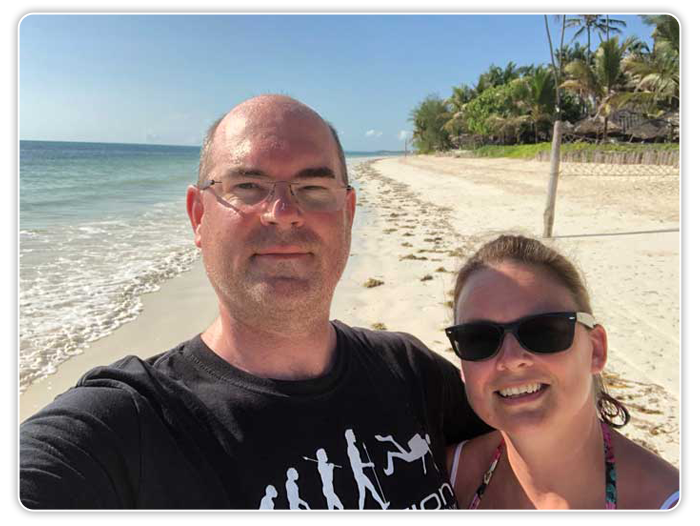
You Could Be Just One Simple Letter Away From The End Of All Your Financial Worries...
... And If You Enter Your Mailing Address Below I Can Show You Exactly How To Write It!
Privacy Policy: We value your privacy. You can unsubscribe from receiving future emails with 1 click at any time.

